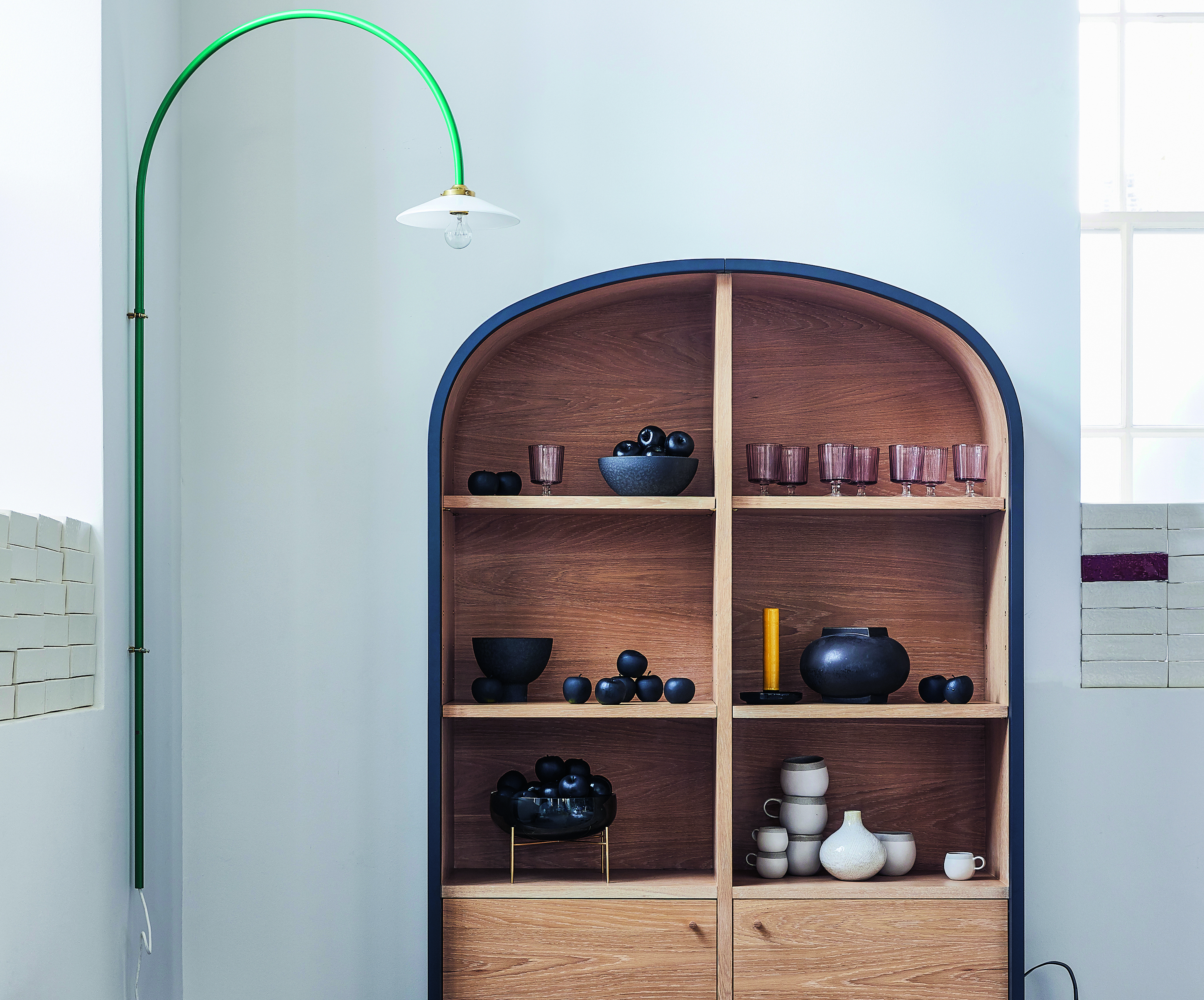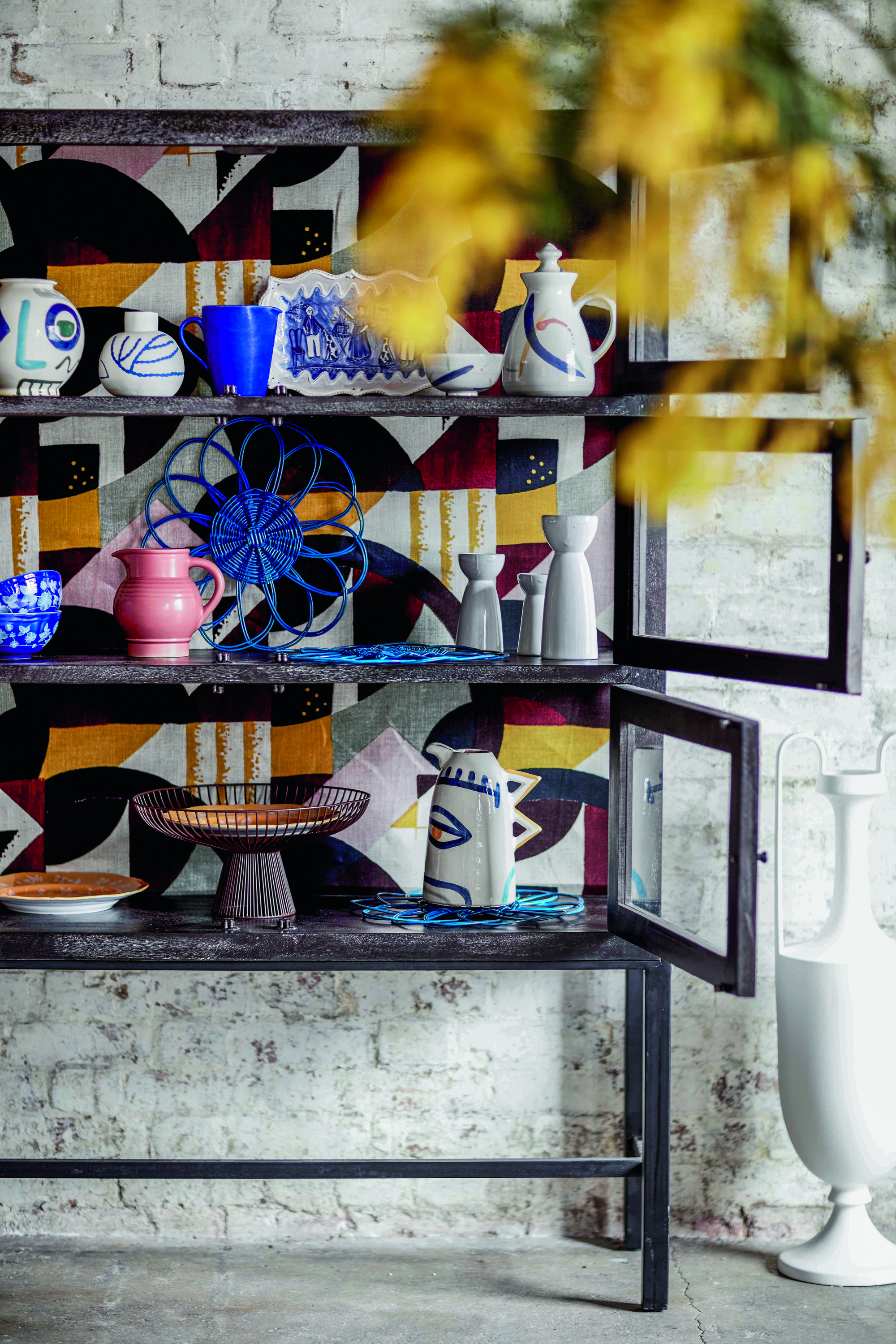These designers have 5 rules for getting the curiosity cabinet trend right, including how not to over-style one
The rising trend of curiosity cabinets is all about showcasing your expertly curated home decor to give it the attention it so deserves. These designers explain how it's done


Where should you put that gorgeous candle that you refuse to burn? What about that vase that deserves to be seen, with or without flowers in it? Knowing where to display your home decor and accessories to fit your interior design style can be a challenge. While a shelf or coffee table may be the obvious choices, sometimes our trinkets deserve a dedicated space of their own. Enter: the humble display cabinet.
While still considered an outdated piece of furniture by some, the glass-fronted cabinet has made a comeback this year. Their growing popularity in our wider room designs shows just how much value we put on those finer details - after all, these objets were designed to be seen. And is there really a better way of showcasing our eye for design than with a beautiful display cabinet adorned with a carefully curated selection of decorative items?
But why has there been a shift towards this purely aesthetic piece of furniture? 'People are moving away from simply following trends to a more personal and considered style,' explains interior designer Carrie Webb, the creative mind behind furniture upcycling business, Webb & Gray. 'They want their interiors to be an expression of themselves and to reflect their own stories and interests, and glass-fronted cabinets are an ideal way to bring meaningful objects together and cohesively display them.'
This new take on open shelving brings furniture and detail together, allowing us to curate an exhibit of our most favored items which offers guests a feast for the eyes. What's more, there's no rainy day activity more enjoyable than reshuffling the contents of your cabinet to shake things up a bit. Although curiosity cabinets are all about unrestrained design freedom, we think there are a few points to consider before you try your hand at styling one, which we've compiled for you here.

Lilith is an expert at following news and trends across the world of interior design. She's committed to sharing articles that help readers embrace emerging trends for beautifully styled homes. For this piece, she spoke with designers to learn how to learn how to style the perfect display cabinet to put your decor in the spotlight.
1. Place in a high traffic area for a show-stopping effect
Before you even think about what to decorate your cabinet with, you should give special thought to where you want to put it. With a display cabinet, the clue is in the name - there's no point hiding this statement item somewhere it won't be seen.
'A living room is a great place for a display cabinet as it can be enjoyed at leisure, providing a decorative feature for the room as well as a talking point,' explains Carrie from Webb and Gray. 'An entryway can also be a good location - display cabinets are usually slim so can be accommodated against a wall and will add personality and an eclectic museum-like feel.'
Think of your curiosity cabinet as the showstopper of your room. Place it just inside your front door, or next to a drink stand in the living room when hosting guests. This way, not only will it make an impression, but it will act as a conversation starter when the small talk inevitably gets dull.
The Livingetc newsletters are your inside source for what’s shaping interiors now - and what’s next. Discover trend forecasts, smart style ideas, and curated shopping inspiration that brings design to life. Subscribe today and stay ahead of the curve.
Glass-fronted cabinets also work well in other areas guests frequent in the home, like dining rooms, kitchens, and bathrooms. 'This is also because those rooms tend to be where our prettiest objects are used,' explains interior designer Heather Bullard. 'Think of your grandmother's china, a special collection of travel mementos, beautiful handmade dishes, or the prettiest apothecary bottles, perfumes, and potions.'
2. Embrace eclecticism and individuality

One of the key benefits of a curated display cabinet is its individuality. You can rest assured that no one - I mean, no one - will have one the same. Yes, we might opt for the same piece of furniture, but it's the objects and ornaments we decide to put in it that make it your own.
Beyond being a stylish storage idea, display cabinets are all about showcasing your personality and style, perfecting the look to suit your particular taste using items guaranteed to spark your guests' curiosity. So, with that in mind, be eclectic with your choices. Use a cohesive color palette or overarching interior design style to help ensure it sits within your wider scheme, but add a touch of quirkiness.
'I’m a great believer in choosing something because you love it,' explains Carrie. 'I like to mix old and new styles in my interiors as well as within the furniture pieces I create. You don’t have to stick to one style or era - an ornate gilded cabinet can look stunning in a minimalist space just as a sleek modern or mid-century design can provide a dramatic contrast to the elaborate details of a period property.'
Since these cabinets are all about replicating that museum-like feel, you should also include those sentimental items and family heirlooms you'd otherwise hide in a cupboard for an eclectic style. They're bound to spark interest, even if you don't think they gel well with the rest of your collection.
Be experimental with the design of your cabinet, too. As Carried explains: 'Antique, vintage or upcycled cabinets are perfect for that one-of-a-kind piece. Not only do they offer individuality, but sustainability as well.'
3. Don't overdo the decorating

The phrase 'less is more' has never been more appropriate than when discussing intriguing display cabinets. 'There are no rules about what pieces you can and can’t include but don’t overdo it,' Carrie emphasizes. While you want the contents on the shelves to do the talking, with too many objects and artifacts, you won't know where to look. What's more, it contributes to an untidy-looking design.
So, what should you incorporate? Really, this is up to you. But decorative items like candles, glassware, and books all lend themselves well to this type of shelving idea. 'Choose a few key pieces as your starting point and build your collection around them,' suggests Carrie. 'Leave some spaces and don’t be tempted to cram your cabinet full.'
'Go for a variety of sizes and heights - bigger items will add weight and stop the composition from feeling cluttered while smaller pieces should be grouped to stop them feeling lost. The rule of threes is a useful way to arrange your objects to create balance,' she continues.
Don't forget about the top of your cabinet either when it comes to using accessories. This is a great place to stack books, place a vase of dried flowers, or experiment decorating with plants. It will give your cabinet some height, too, helping it blend in with its wider surroundings. 'I would recommend keeping items on top of your cabinet to a minimum though,' Carrie adds. 'I favor a trailing plant or small lamp. You don’t want to detract from the cabinet itself.'
4. Consider a range of textures

Varying heights is a must when it comes to curating your decor, but don't overlook the important of texture design either. To add contrast and draw the eye, mix up the materials inside your cabinet.
'Contrast translucent glass pieces with solid items like books, and then add softness with plants,' says Carrie. 'Sculptural ceramics, glassware and interesting curios all make good contents while offering a more solid texture.'
There's no reason why you couldn't included linen pieces in your cabinet, too. Use a delicate piece of material as a soft base for your treasured possessions while adding some visual variety.
5. Don't overlook the finer details

Finally, a well-curated cabinet is about more than just the contents within. When choosing - or upcycling - your cabinet, pay attention to detail to add some visual intrigue.
'I like to use specialist finishes like gold leaf, decorative wallpapers and iridescent glass as well as adding details such as bespoke feet or new hardware to transform vintage pieces,' says Carrie. 'This creates a truly unique piece of furniture in which to display your own personally curated collection.'
Customize your design with wallpaper by papering the back paneling or painting your cabinet a bold color. Don't be afraid to get creative with it and add new hardware like brass handles or ceramic knobs. The only definitive instruction we can give you is to make it your own.

Lilith Hudson is a freelance writer and regular contributor to Livingetc. She holds an MA in Magazine Journalism from City, University of London, and has written for various titles including Homes & Gardens, House Beautiful, Advnture, the Saturday Times Magazine, Evening Standard, DJ Mag, Metro, and The Simple Things Magazine.
Prior to going freelance, Lilith was the News and Trends Editor at Livingetc. It was a role that helped her develop a keen eye for spotting all the latest micro-trends, interior hacks, and viral decor must-haves you need in your home. With a constant ear to the ground on the design scene, she's ahead of the curve when it comes to the latest color that's sweeping interiors or the hot new style to decorate our homes.